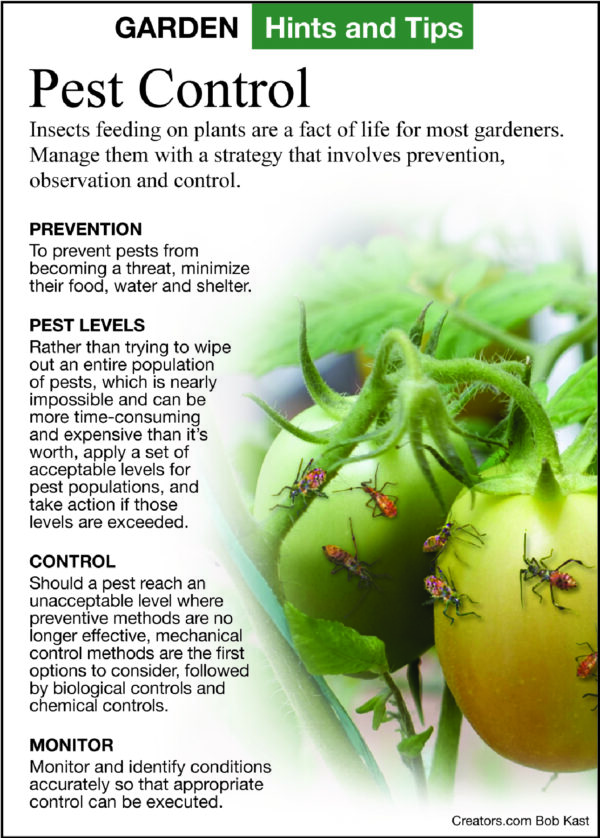
As spring arrives, it is time to start scouting for signs of diseases, insects, and weeds. Once a pest is found that may result in significant damage, a control measure must be found to produce an economical reduction of the pest population. The control must also be minimally disruptive to the natural controls of the pest. It should be the least hazardous to human health, the least toxic to nontarget organisms, and the least damaging to the general environment. It needs to be easy to use effectively and cost-effective over both the short and long term.
For many of our landscape pests, we can use a cultural control to increase plant health to prevent pest problems. Healthy plants can tolerate pest damage without using any chemical control treatments. For instance, mowing a lawn creates stress to the grass plant, so it is necessary to fertilize and water correctly to help keep the grass healthy. A lawn full of healthy grass can prevent weeds from getting into the lawn. Proper cultural care helps prevent the pest weeds and the need for herbicides.
Some plant diseases can be prevented by using plants that have a natural genetic resistance to the disease. Many newer varieties of perennials, shrubs, and garden vegetables are naturally genetically modified organisms that are resistant to disease organisms. For instance, look at your tomato tags for disease resistance to verticillium wilt, with a “V,” or nematodes, with an “N,” on the tag. Using disease-resistant varieties is a cultural control that reduces the need for chemicals in the garden.
Cultural controls are often the most effective long-term solution, as they put plants back into the thrive range of growing conditions.
Biological control agents, such as using ladybugs to eat aphids, help reduce the need for insecticides. Parasitic wasps the size of fruit flies can be purchased for control of some caterpillars. They insert their eggs directly into the caterpillar, and the larvae eat the caterpillar from the inside. Bacillus thuringiensis is a commercially available bacterial species that causes disease in many caterpillars, mosquitoes, and some other insects. It is found in many products, but be sure to get the variety that affects your problem insect. Neoseiulus predatory mites are available for spider mite control.
Mechanical controls include traps, pheromone traps, fencing, electric fence wires, and other barriers. Mechanical control for insects includes floating row covers over vegetable crops to exclude flea beetles; cucumber beetles; and adults of the onion, carrot, cabbage, and corn rootworm maggots.
Many people rely on chemicals for pest control as their first option, without looking at biological, cultural or mechanical controls. Chemical controls may not be as effective as other types of controls. At the same time, many pests have developed resistance to common chemical controls. This causes the pest population to resurge after a spraying.
Chemical controls can reduce the natural biological controls for many pests. The more diverse an ecosystem is, the smaller the pest population will be because natural predators, parasites and diseases work to maintain lower levels. For instance, insect pests have many natural control organisms that are predators, parasites and diseases, such as bacteria, bats, birds, fungi, insects, mammals, and viruses. Chemical controls for insects and diseases should be used as the last resort in many cases.
Email questions to Jeff Rugg at info@greenerview.com. To find out more about Jeff Rugg and read features by other Creators Syndicate writers and cartoonists, visit the Creators Syndicate website at Creators.com. Copyright 2021 Jeff Rugg. Distributed by Creators Syndicate.






Be the first to comment